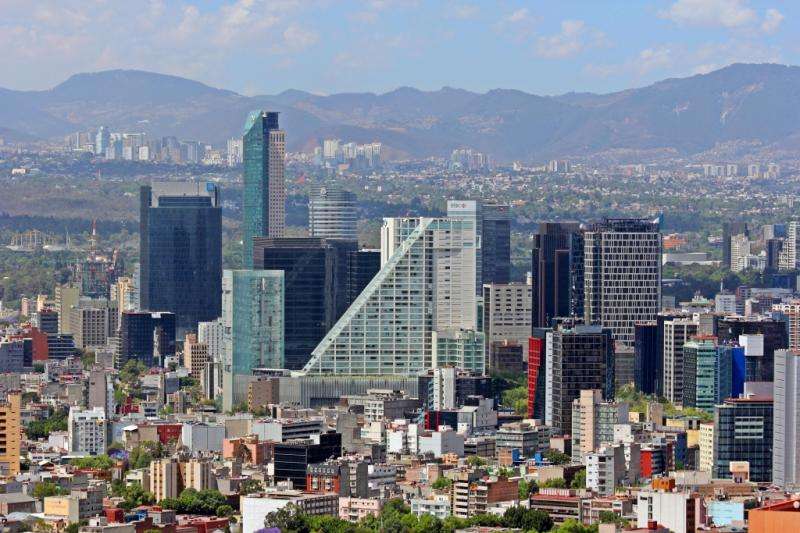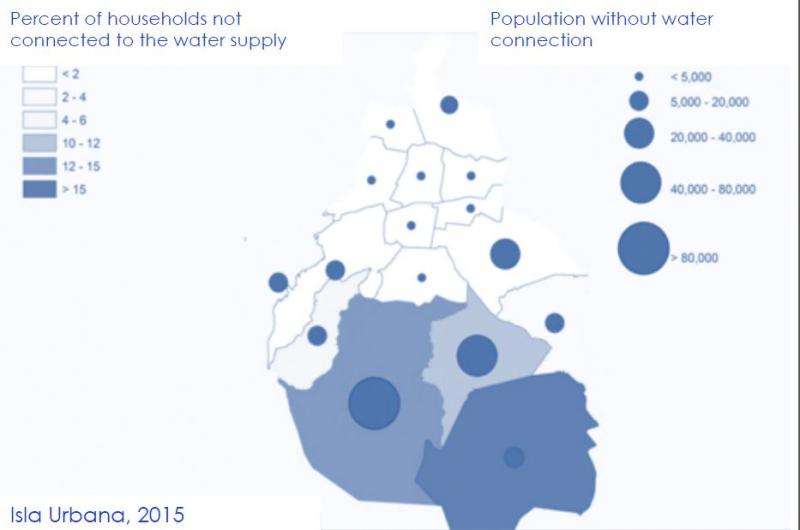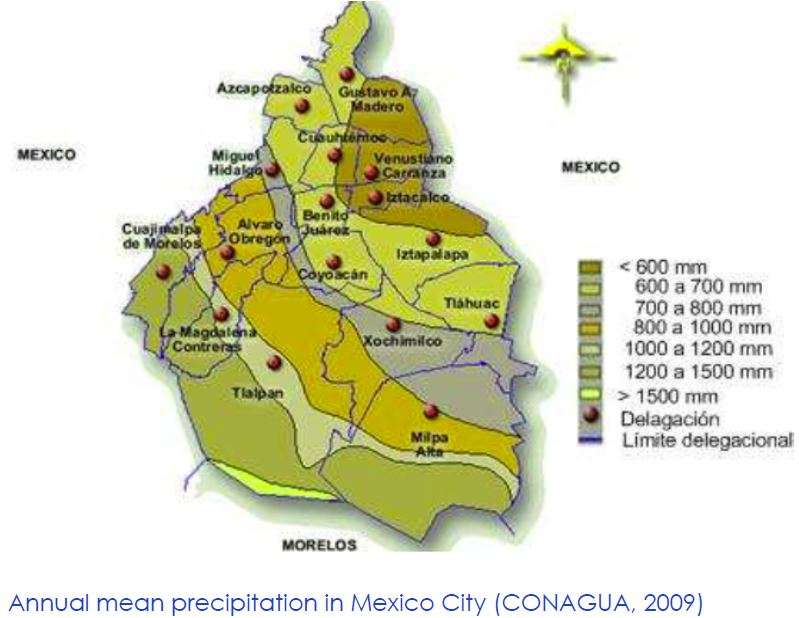To ease Mexico City's water woes, look up, study suggests

For Mexico City's biggest businesses and its poorest neighborhoods, rainwater harvesting could help address an enormous water crisis plaguing the city, a recent Columbia Water Center study found. Although critics often contend that rainwater harvesting is not cost-effective in the short-term, the researchers used a new methodology to calculate whether the approach would yield cost savings over 10 years for specific buildings and boroughs in Mexico City and for the city as a whole.
"Some people say, no it doesn't make sense, because water is so cheap and will never pay out," said Paulina Concha Larrauri, an environmental engineering researcher with the Columbia Water Center at Columbia University. "But in reality for large consumers…it actually would make sense."
The study, which was funded by Mexican water technology giant Rotoplas, showed that rainwater harvesting has great potential to source water for domestic users in the poorest neighborhoods in the city, which have the greatest need. For non-domestic users such as retailers, wholesalers, restaurants, offices and hotels with high water demands, net returns were positive in most cases.
Benito Juarez, for instance, one of Mexico City's wealthiest boroughs, could source a large share of its water from rainwater because it has a lot of offices, restaurants and supermarkets that pay high tariffs for their water, said Larrauri.
Poor semi-rural villages in the southern part of Mexico City, such as Ajusco in the borough of Tlalpan, could also benefit from rainwater harvesting. Many homes in the boroughs of Tlalpan and Milpa Alta are not connected to the city's water network, so residents often spend an enormous portion of their monthly income to lug bottles of water from pipes on the edge of town and to purchase "garrafones," jugs of drinking water. And that often isn't enough. In these marginalized neighborhoods, the researchers found the average annual percent demand that could be met with rainwater was around 60 percent.

Mexico City is said to have the greatest demand for water of any city in the world: 300 liters per person per day for each of its close to 9 million residents and the millions of others who work there. Its aquifers are running dry, causing the city to sink into the earth and leading to rationing and service cuts. But heavy rains often yield flooding, with storm runoff contaminating the water supply. Around 20 percent of precipitation ends up in the sewer. Much of the water that is pumped into the city is lost through leakage, as well as illegal connections. In 2000, it was estimated that there were about 2.5 million water connections in the metropolitan area of Mexico City: 67 percent domestic, 16 percent commercial and 17 percent industrial. But these legal connections represent only about two thirds of the total.
To conduct their analysis, the Columbia Water Center researchers collected data on local differences in water demands, water quality, rooftop areas, tariffs and precipitation. Because rooftop area helps to determine how much rainwater is captured, they took samples of rooftop area from city maps. They also calculated the concentration of houses and businesses in different boroughs of the city using data from the Mexico City census and Mexico's National Institute of Statistics and Geography. Then they aggregated this information by borough and calculated the average net present value you could achieve with rainwater harvesting by borough, size of building and type of demand. (Net present value measures return on an investment over time.) They further aggregated by sector: domestic, big retailers and big wholesalers, restaurants and hotels, and calculated demand, cost and precipitation.
"Precipitation in Mexico City really varies by borough, because there are these microclimates, so you will have a lot of precipitation in the south and half of that in the north, so that really impacted how rainwater harvesting behaves," said Larrauri. "So in the north you have a lot more commercial buildings that pay a lot of money [for water], but you could not harvest as much rain as in the south, where you have all the poorest areas that aren't connected to the network."

The economics of rainwater harvesting in Mexico City could improve as rainwater harvesting systems grow in popularity, which should drive down the cost. The same is true if Mexico City revises its system of tariffs to better reflect the true cost of water.
Over the past eight years, a non-profit called Isla Urbana has begun introducing rainwater harvesting to poor communities in the southern part of the city, mainly in the boroughs of Tlalpan, Xochimilco and Ixtapalapa, to reduce costs and provide a more reliable water supply. Mexico City's water authority, SACMEX, has also installed rainwater harvesting systems in 85 schools in the Tlalpan and Alvaro Obregón boroughs.
Provided by Earth Institute, Columbia University
This story is republished courtesy of Earth Institute, Columbia University: blogs.ei.columbia.edu .


















